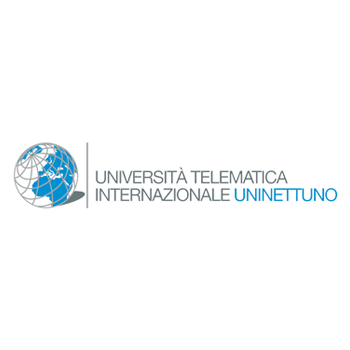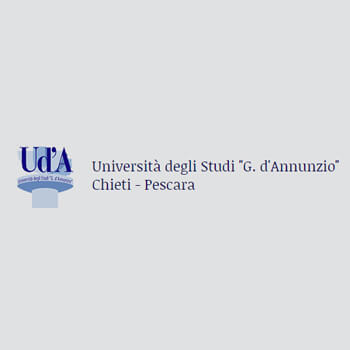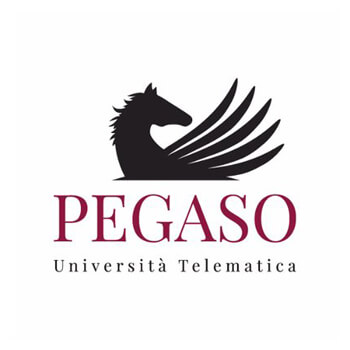University of Milano

Founded: 1924
Address: Via Festa del Perdono 7 - Milan, Italy
Phone: +39 02 503111
Address: Via Festa del Perdono 7 - Milan, Italy
Phone: +39 02 503111
Here you find out University of Milano complete information about fees, location, degree University of Milano offers, number, website, and much more. University of Milano is a leading university in Milan - Italy.
You can also find out jobs at University of Milano for students, teachers, and professors. We also update the database for an internship at University of Milano for students.
The University of Milan is a public teaching and research university, which - with 8 faculties and 2 schools and a teaching staff of more than 2000 professors - is distinguished by its wide variety of disciplinary fields.
A leading institute in Italy and Europe for scientific productivity, the University of Milan is the largest university in the region, with approximately 64,000 students;... it is also an important resource for the socio-economic context of which it is a part.
Milan is, in fact, the capital of Lombardy, one of the most dynamic and international regions in the European Union, a leader in the national economy that stands at the Italian forefront of research and development investments and commitment to technological innovation.
The University of Milan also possesses a remarkable artistic and cultural heritage that includes important historic buildings, inherited and acquired collections, archives, botanical gardens and the old Brera Observatory commissioned by Maria Teresa of Austria.
The University’s departments are housed in important historic edifices in the centre of Milan and in modern buildings in the area known as Città Studi (the City of Studies).
Among the palazzos that house the University’s facilities are the old Ca" Granda – a monumental complex from the 15th-century in the heart of the historical city centre - the 18th-century Palazzo Greppi designed by Giuseppe Piermarini – who built the Scala Theatre in Milan – and the 17th-century Sant’Alessandro College commissioned by the Arcimboldi family.
The book collection, which is one of the richest in the region, is preserved in 47 libraries, while the APICE Centre collects rare and valuable book stocks and archives.
The University also has a Choir and its own Orchestra, which actively contributes to the cultural life of the city and receives international acknowledgements on an increasingly frequent basis.
The University of Milan was founded in 1924, uniting two institutions that boasted a great tradition of medical, scientific and humanistic studies: the Accademia Scientifico-Letteraria (Scientific-Literary Academy), active since 1861, and the Istituti Clinici di Perfezionamento (Clinical Specialisation Institutes), established in 1906.
By 1928, the University already had the fourth-highest number of enrolled students in Italy, after Naples, Rome and Padua, distinguishing itself through the high profile of its teaching staff.
Its premises are located in Città Studi (the City of Studies), the university quarter constructed from 1915 onwards that is home to the scientific faculties, and in several buildings in the historic city centre, which house the humanities faculties.
At the time of its foundation, there were four “traditional” faculties - Law, Humanities, Medicine and Mathematical, Physical and Natural Sciences; then, in the 1930s, the Faculties of Veterinary Medicine and Agriculture were introduced, after the aggregation of the old schools of Veterinary Medicine (1792) and Agriculture (1871).
At the end of the Second World War, the old Ospedale dei Poveri (Hospital for the Poor), known as “la Cà Granda” (the Big House), was assigned to the University. The building, one of the first Italian examples of civil architecture - commissioned in the 15th century by the Sforza family, the dukes of Milan - was seriously damaged by the bombings of 1943. In 1958, after a complex series of reconstruction and renovation works, it became home to the University Rector’s Office, the administrative offices and the Faculties of Law and Humanities.
Italian universities have enjoyed complete autonomy since 1989.
Therefore, each institution defines its own norms to regulate educational/scientific activities and its financial and organisational structure.
The central government of the University is entrusted to the Rector (Rettore) and to two collegial bodies.
The Rector is the highest representative of the university and has the task of coordinating, implementing and monitoring university policy.
The Academic Senate (Senato accademico) is the collegial body that defines the university’s operation and development strategies and coordinates educational and scientific activities.
The Board of Directors (Consiglio di amministrazione) oversees the procurement of financial resources, the administration of economic/cultural assets and the management of technical and administrative staff.
At the head of the administrative structure is the Managing Director (Direttore amministrativo), who coordinates the activities of the technical and administrative staff and applies the plans and objectives defined by the governing bodies.
Finally, there are the governing bodies of the various educational and scientific (Departments, Centres) facilities, which also enjoy administrative and organisational autonomy.
You can also find out jobs at University of Milano for students, teachers, and professors. We also update the database for an internship at University of Milano for students.
The University of Milan is a public teaching and research university, which - with 8 faculties and 2 schools and a teaching staff of more than 2000 professors - is distinguished by its wide variety of disciplinary fields.
A leading institute in Italy and Europe for scientific productivity, the University of Milan is the largest university in the region, with approximately 64,000 students;... it is also an important resource for the socio-economic context of which it is a part.
Milan is, in fact, the capital of Lombardy, one of the most dynamic and international regions in the European Union, a leader in the national economy that stands at the Italian forefront of research and development investments and commitment to technological innovation.
The University of Milan also possesses a remarkable artistic and cultural heritage that includes important historic buildings, inherited and acquired collections, archives, botanical gardens and the old Brera Observatory commissioned by Maria Teresa of Austria.
The University’s departments are housed in important historic edifices in the centre of Milan and in modern buildings in the area known as Città Studi (the City of Studies).
Among the palazzos that house the University’s facilities are the old Ca" Granda – a monumental complex from the 15th-century in the heart of the historical city centre - the 18th-century Palazzo Greppi designed by Giuseppe Piermarini – who built the Scala Theatre in Milan – and the 17th-century Sant’Alessandro College commissioned by the Arcimboldi family.
The book collection, which is one of the richest in the region, is preserved in 47 libraries, while the APICE Centre collects rare and valuable book stocks and archives.
The University also has a Choir and its own Orchestra, which actively contributes to the cultural life of the city and receives international acknowledgements on an increasingly frequent basis.
The University of Milan was founded in 1924, uniting two institutions that boasted a great tradition of medical, scientific and humanistic studies: the Accademia Scientifico-Letteraria (Scientific-Literary Academy), active since 1861, and the Istituti Clinici di Perfezionamento (Clinical Specialisation Institutes), established in 1906.
By 1928, the University already had the fourth-highest number of enrolled students in Italy, after Naples, Rome and Padua, distinguishing itself through the high profile of its teaching staff.
Its premises are located in Città Studi (the City of Studies), the university quarter constructed from 1915 onwards that is home to the scientific faculties, and in several buildings in the historic city centre, which house the humanities faculties.
At the time of its foundation, there were four “traditional” faculties - Law, Humanities, Medicine and Mathematical, Physical and Natural Sciences; then, in the 1930s, the Faculties of Veterinary Medicine and Agriculture were introduced, after the aggregation of the old schools of Veterinary Medicine (1792) and Agriculture (1871).
At the end of the Second World War, the old Ospedale dei Poveri (Hospital for the Poor), known as “la Cà Granda” (the Big House), was assigned to the University. The building, one of the first Italian examples of civil architecture - commissioned in the 15th century by the Sforza family, the dukes of Milan - was seriously damaged by the bombings of 1943. In 1958, after a complex series of reconstruction and renovation works, it became home to the University Rector’s Office, the administrative offices and the Faculties of Law and Humanities.
Italian universities have enjoyed complete autonomy since 1989.
Therefore, each institution defines its own norms to regulate educational/scientific activities and its financial and organisational structure.
The central government of the University is entrusted to the Rector (Rettore) and to two collegial bodies.
The Rector is the highest representative of the university and has the task of coordinating, implementing and monitoring university policy.
The Academic Senate (Senato accademico) is the collegial body that defines the university’s operation and development strategies and coordinates educational and scientific activities.
The Board of Directors (Consiglio di amministrazione) oversees the procurement of financial resources, the administration of economic/cultural assets and the management of technical and administrative staff.
At the head of the administrative structure is the Managing Director (Direttore amministrativo), who coordinates the activities of the technical and administrative staff and applies the plans and objectives defined by the governing bodies.
Finally, there are the governing bodies of the various educational and scientific (Departments, Centres) facilities, which also enjoy administrative and organisational autonomy.
Read More
Details:
LeaderShip:
Fees:
Time:
Phone Number: +39 02 503111
City: Milan
Fees:
Time:
Phone Number: +39 02 503111
City: Milan
Timing:
Country: Italy
Staff: 4177
Website: http://www.unimi.it
Country: Italy
Staff: 4177
Website: http://www.unimi.it
Subjects:
Jobs in University of Milano
Currently, there is no job opening in University of Milano as per our database.



















Leave a Reply